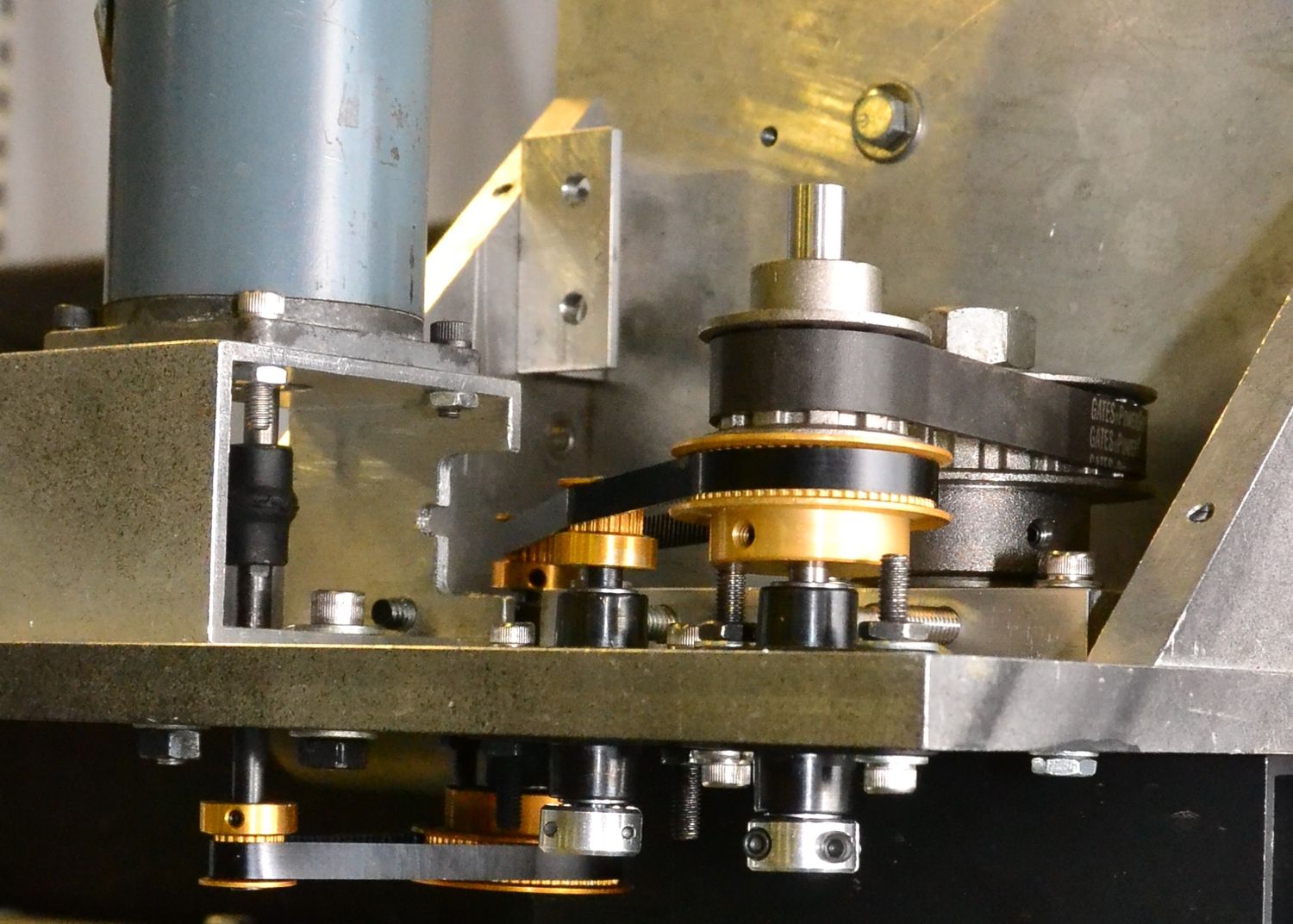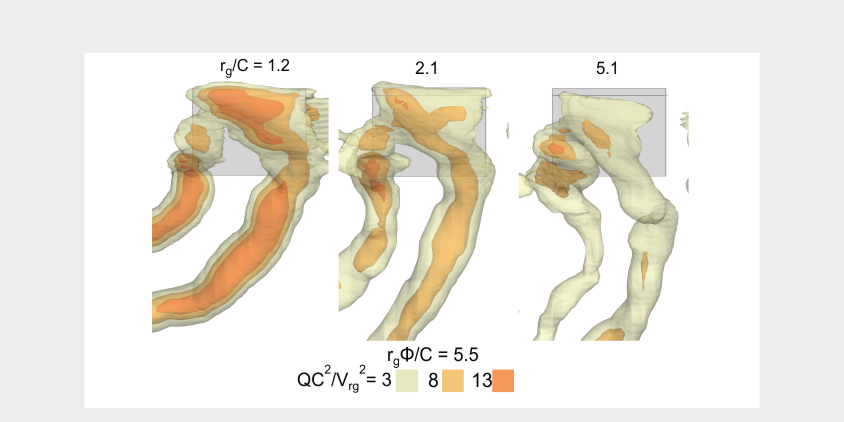Submitted by maw410 on Thu, 2013-12-19 12:25
Effect of Radius of Gyration: The flow structure on a rotating wing is determined via stereoscopic particle image velocimetry. Sectional and three-dimensional, volumetric reconstructions define the flow patterns as a function of Radius of gyration Ro = rg/C. Aspect ratio AR = 1 and AR = 2 rectangular, flat plates are rotated at a geometric angle of attack α= 45∘. The flow structure is determined at various angles of rotation, in order to characterize both the initial development and the fully evolved state of the flow structure. The radius of gyration rg/C is varied via alteration of the radius of gyration rg of the wing, to give values from rg/C = 1.2 to rg/C = 5.1 for the AR = 1 wing, and values from rg/C = 1.7 to rg/C = 4.7 for the AR = 2 wing. Large changes of the flow structure are represented by images of of spanwise vorticity; Q-criterion, spanwise velocity, downwash velocity, tangential velocity, and helical density h. At small radius of gyration, a vortex is attached to the leading edge of the wing; it is present along most of the span. At larger radii of gyration, this leading-edge vortex becomes less organized and deflects away from the surface of the wing. At the largest radius of gyration investigated for each wing, the structure of the flow in the vicinity of the leading edge is most disorganized and resembles a separated shear layer. The nature of other elements of the three-dimensional flow, such as the root and tip vortices and the downwash velocity, are closely related to the degree of coherence of the leading-edge vortex.
Principal Investigators: M. Wolfinger
Images of the three-dimensional flow structure are shown herein. On the AR =1 wing, shown above, coherent leading-edge, root, and tip vortices are observed for all radii of gyration; these vortical structures are more coherent when the radius of gyration is minimized. On the AR =2 wing, shown below, coherent leading-edge, root, and tip vortices are present at small radius of gyration. When the radius of gyration is increased, these vortical structures are replaced by an arch vortex, which has been observed on translating wings at high angle of attack.

An image showing the drive system of the rotating wing apparatus is show below.




